Escape the Zine
I made an escape room zine! Check out the puzzles below. If you try solving them and have questions or want to check answers, please send me an email. Or, you could send me a DM on Twitter or Instagram.
Happy puzzling!
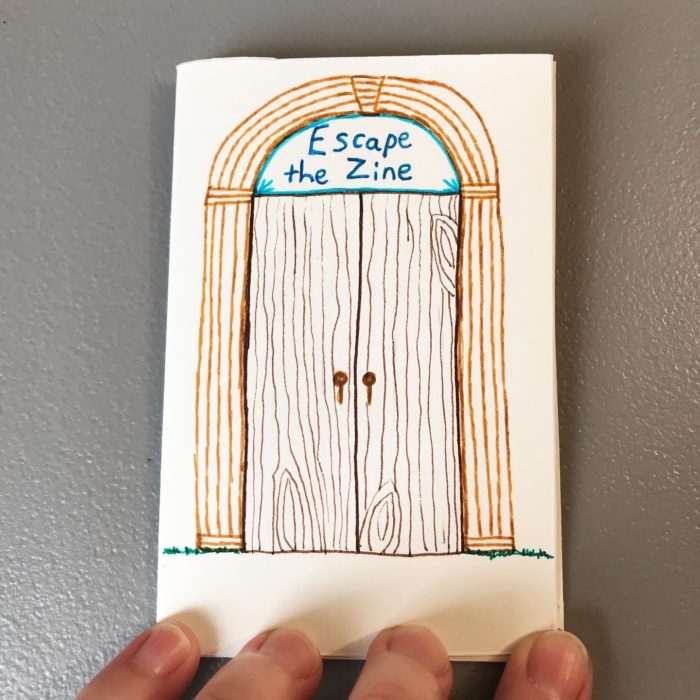
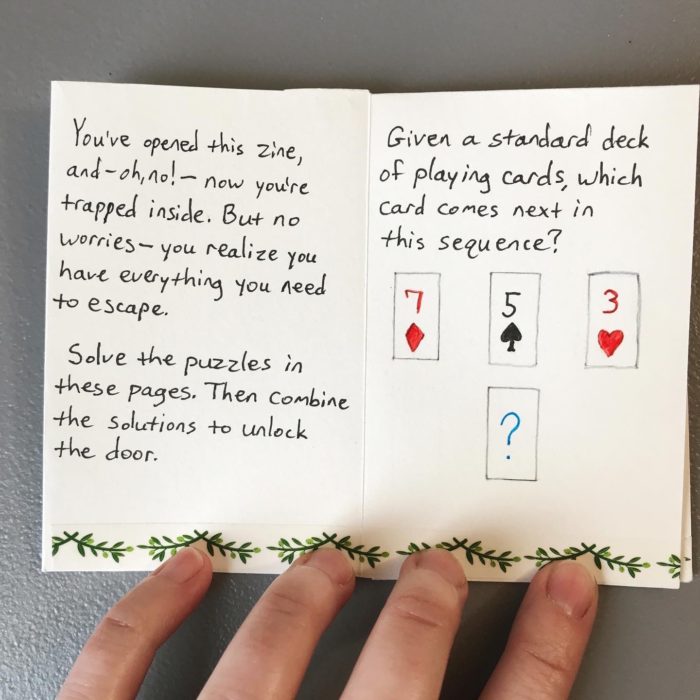
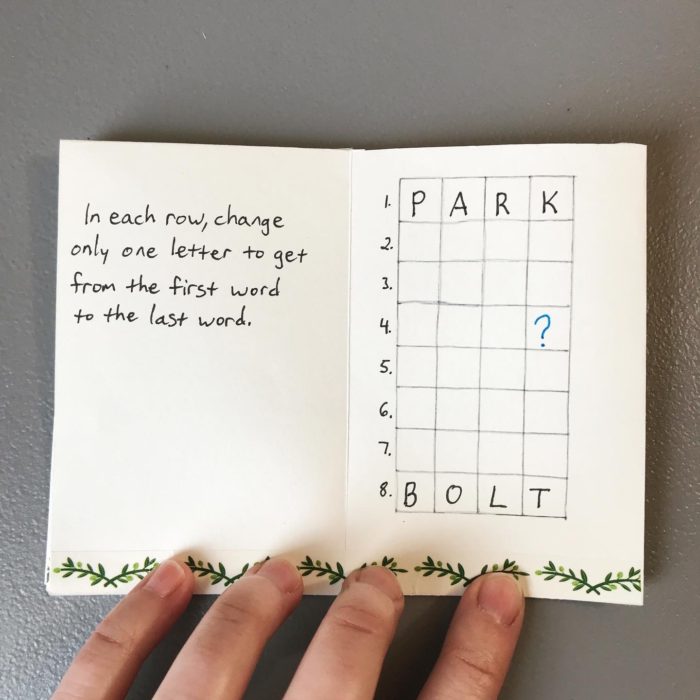
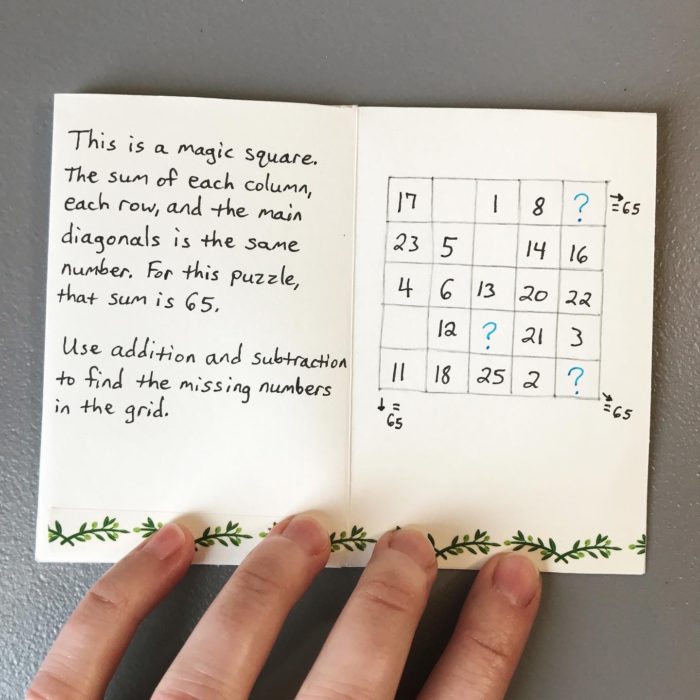
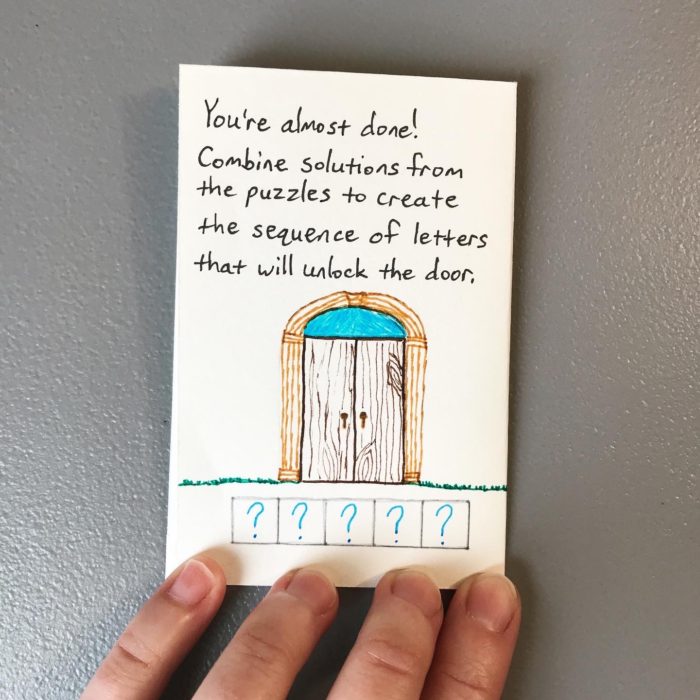
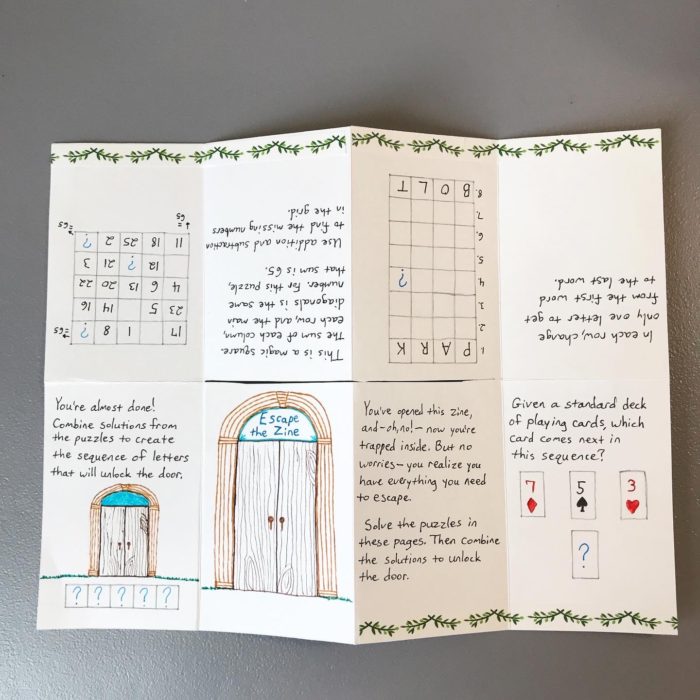
I made an escape room zine! Check out the puzzles below. If you try solving them and have questions or want to check answers, please send me an email. Or, you could send me a DM on Twitter or Instagram.
Happy puzzling!






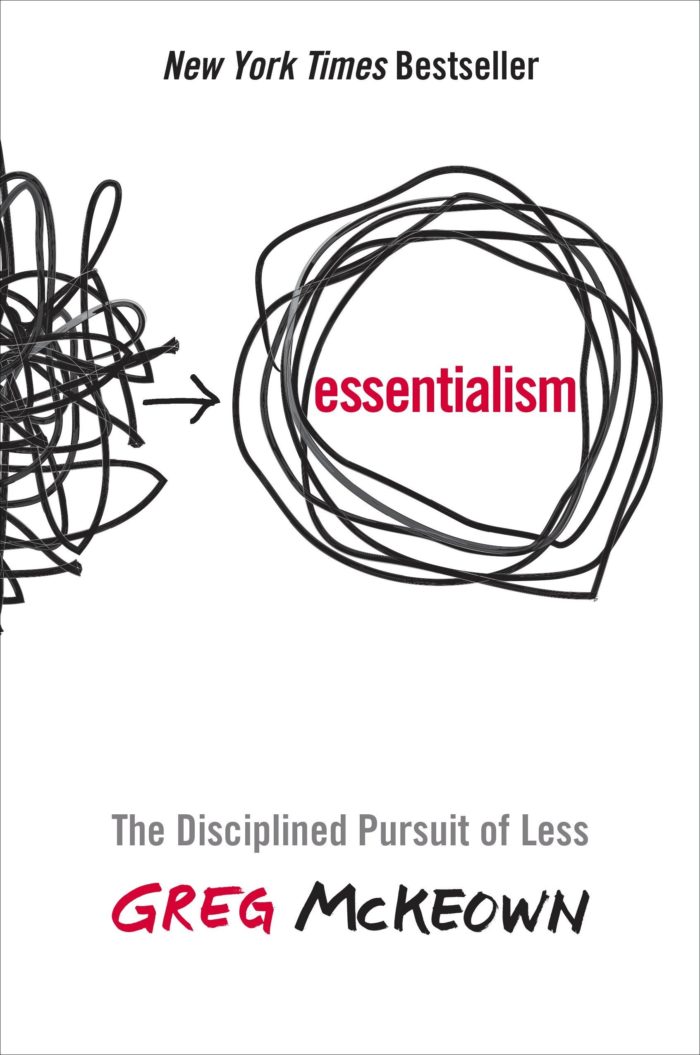
Here are my notes on Essentialism: The Disciplined Pursuit of Less by Greg McKeown.
The way of the Essentialist is the relentless pursuit of less but better.
Essentialism is not about how to get more things done; it’s about how to get the right things done. […] It is about making the wisest possible investment of your time and energy in order to operate at our highest point of contribution by doing what is essential.
The way of the Essentialist means living by design, not by default.
What if we stopped celebrating being busy as a measurement of importance?
For too long, we have overemphasized the external aspect of choices (our options) and underemphasized our internal ability to choose (our actions). This is more than semantics. Think about it this way. Options (things) can be taken away, while our ability to choose (free will) cannot be.
A Nonessentialist approaches every trade-off by asking, “How can I do both?” Essentialists ask the tougher but ultimately more liberating question, “Which problem do I want?” An Essentialist makes trade-offs deliberately. She acts for herself rather than waiting to be acted upon. As economist Thomas Sowell wrote: “There are no solutions. There are only trade-offs.”
Essentialists see trade-offs as an inherent part of life, not as an inherently negative part of life. Instead of asking, “What do I have to give up?” they ask, “What do I want to go big on?” The cumulative impact of this small change in thinking can be profound.
If his people are too busy to think, then they’re too busy, period.
Focus is something we have. But focus is also something we do.
Here’s another paradox for you: the faster and busier things get, the more we need to build thinking time into our schedule. And the noisier things get, the more we need to build quiet reflection spaces in which we can truly focus.
The best journalists do not simply relay information. Their value is in discovering what really matters to people.
Being a journalist of your own life will force you to stop hyper-focusing on all the minor details and see the bigger picture.
Sadly, not only do far too few companies and organizations foster play; many unintentionally undermine it.
Play broadens the range of options available to us.
Play is an antidote to stress.
Play has a positive effect on the executive function of the brain.
Our highest priority is to protect our ability to prioritize.
By definition, applying highly selective criteria is a trade-off; sometimes you will have to turn down a seemingly very good option and have faith that the perfect option will soon come along.
If it isn’t a clear yes, then it’s a clear no.
Make your peace with the fact that saying “no” often requires trading popularity for respect.
Respect is far more valuable than popularity in the long run.
In a reverse pilot you test whether removing an initiative or activity will have any negative consequences.
A good film editor makes it hard not to see what’s important because she eliminates everything but the elements that absolutely need to be there.
What I mean is that a good editor is someone who uses deliberate subtraction to actually add life to the ideas, setting, plot, and characters.
It can be quite painful to eliminate passages, pages, or even chapters that took weeks, months, maybe even years to write in the first place. Yet such disciplined elimination is critical to the craft. You must, as Stephen King has said, “kill your darlings, kill your darlings, even when it breaks your egocentric little scribbler’s heart, kill your darlings.”
It’s true that doing less can be harder, both in art and in life. Every word, every scene, every activity must count for more.
We need to eliminate multiple meaningless activities and replace them with one very meaningful activity.
The best surgeon is not the one who makes the most incisions; similarly, the best editors can sometimes be the least intrusive, the most restrained.
We can wait. We can observe. We can see how things develop.
Editing our time and activities continuously allows us to make more minor but deliberate adjustments along the way.
When we don’t know what we’re really trying to achieve, all change is arbitrary. So ask yourself, “How will we know when we are done?”
“Routine, in an intelligent man, is a sign of ambition.” — W.H. Auden
When other people are saying yes, you will find yourself saying no. When other people are doing, you will find yourself thinking. When other people are speaking, you will find yourself listening.
When other people are complaining (read: bragging) about how busy they are, you will just be smiling sympathetically, unable to relate.
In many ways, to live as an Essentialist in our too-many-things-all-the-time society is an act of quiet revolution.
I use my bullet journal for personal writing and notes (nothing work-related), so I don’t have much that needs to be tracked on a daily basis.
A couple years ago, I started tracking how I spent my spare time. More specifically, days I spent consuming media vs. working on creative hobbies and side projects. I played with a few different formats and settled on this one, back in May 2018:
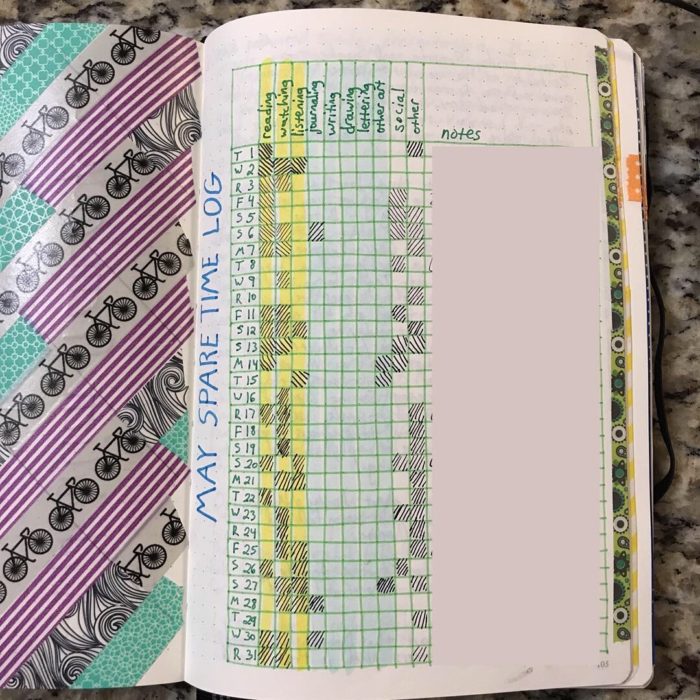
It’s similar to the monthly log in the official bullet journal method, but I added columns to track activities for media consumption (pictured in the yellow columns above) and creative work (pictured in the blue columns). I also had a column for “social”, which was any time I spent hanging out with family or friends. My “other” column served as a catchall for everything else, like chores or errands. And there was space for brief notes for each day.
I liked this format, but the blue columns were mostly empty month after month. That’s because I cycle through what kind of creative projects I work on. For example, I’m rarely drawing and writing at the same time. It’s typically one, and then the other. And I have times where I’m not working on any creative projects at all, for whatever reason.
Also, it didn’t really matter to me what kind of media consumption I spent time on (reading, writing, or listening). Having separate columns for those didn’t help me.
So, I simplified.
A few iterations later, this is what my monthly log looked like:
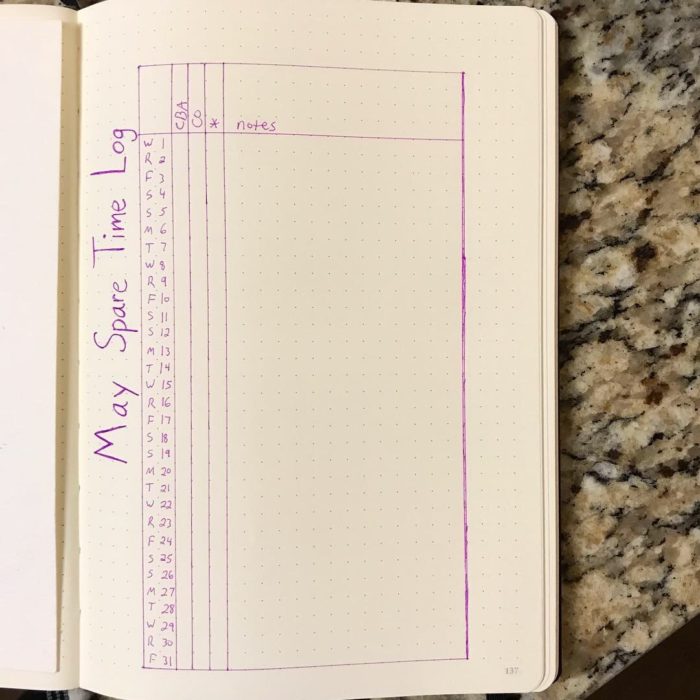
Fewer columns. I had three, plus a section for notes.
The first column is for “Creative Bank Account.” This is an idea from Jake Parker (see his overview video). To summarize his video:
I marked this box when I spent time making “deposits” into my creative bank account. What were 3 yellow columns the year before were condensed to one column.
The second column is for “Creative Output.” This is for time I spent working on a creative project. That could be drawing, writing, or making something. And it included practice time; not only finished work. The blue columns from the year before were now condensed to one column.
The asterisk (*) column served as my catchall. I marked this for social events or running errands. Anything that was not CBA or CO.
I liked the simpler layout. At the end of the month, I could see at a glance where I spent my time when it came to creative work.
This format served me well, but I noticed a trend over time. I marked the CBA and asterisk columns every day. The CO column was the only one that varied.
I didn’t need to have columns for things that happen every day. That didn’t help me see a pattern. So I simplified the log even further.
Starting in May 2020, this is what my monthly log looks like:
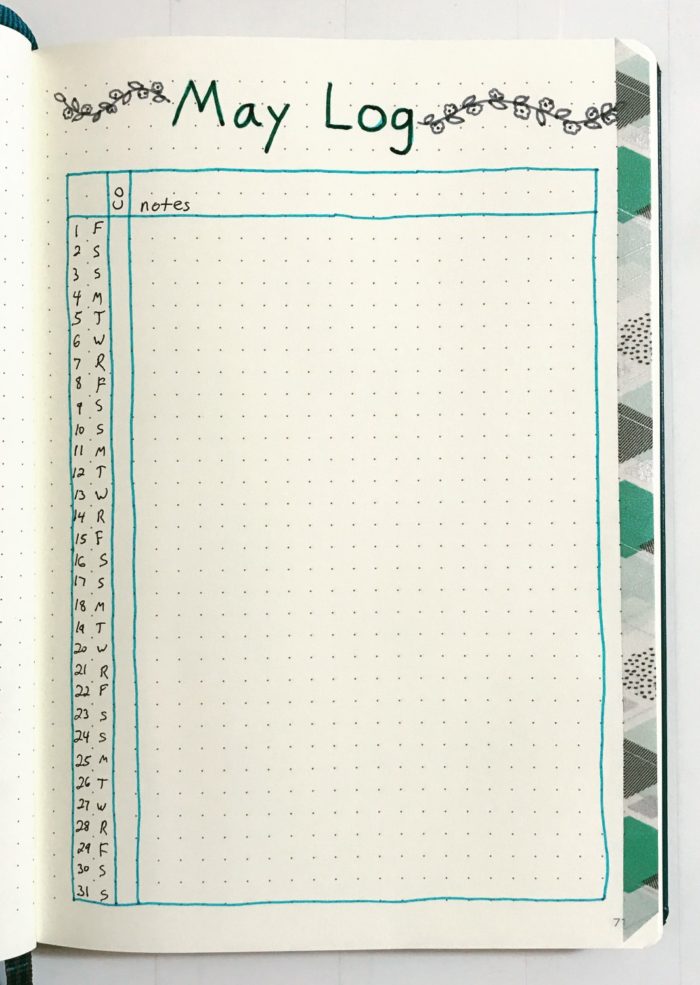
One column to track CO, and then space for brief notes each day. And that’s it.
Besides being quick and easy to fill out the log every day, this simplified format is also easy to draw. Fewer columns, fewer lines, means a faster setup every month.
I like looking for ways to simplify my journal. The less time I spend on layouts and formatting, the more time I have for writing and working on projects.
Are there things you like to track monthly? How do you go about about it? Please let me know in the comments, or send me a message.
When I was in elementary school, we had carnivals twice a year, one in the fall and one in the spring. The carnivals were family fun nights, where we went to school for a few hours and played games, ate hot dogs and cotton candy, and entered raffles.
One year, the prizes were themed after the solar system. There were posters, freeze dried ice cream (remember that?), key chains–things like that. If you won, you got one of those “good” prizes. If you played a game and lost, though, you still got a few glow-in-the-dark stars, the kind you can stick on your ceiling.
Those stars were at every game, so I played and lost a few times, and still got all these plastic stars and planets.
I heard one of the teachers explain the prizes to a parent. I thought I heard her say the stars were the “constellation prize,” and it made sense to me. I could take these stars home and stick them to my ceiling in formation. I could make the Big Dipper and Orion. That was pretty cool.
It was a few years until I realized what that teacher actually said–the prize you get even when you don’t win is the consolation prize.
Years later, this is my favorite thing I’ve ever misheard.
It sounds like a good band name. It was the name of an album, long after I misheard the phrase in elementary school.
I use “Constellation Prize” as a name for random creative projects I’m working on, especially when I don’t have a plan for where the project is going. It’s a label I use for my own reference, so later on, I know, yes, that was a random thing I did for a bit.
And like those random stars and planets I got in elementary school just for trying, the name fits.
If you spend any time on Instagram or Reddit looking at people’s notebooks–how they lay out pages, what materials they use–you’ll see they are essentially two groups of people.
For one group, aesthetics are very important. They use elaborate layouts, lots of color, and mixed media.
For the other group, using the notebook is most important, so it doesn’t matter how it looks. They tend to use simple layouts and simple materials–in many cases, simply a black pen and nothing else.
Both groups are using notebooks in the ways that work best for them.
But I like my notebooks messy. Here’s why:
I use my notebook to play and experiment. Anything and everything can go in it–snippets of writing, lists, quotes. It’s okay if it’s random and unorganized.
When I have new ideas, I start working on them in a notebook. It’s the place I flesh out ideas and refine them. The final outcome won’t be in my notebook, so I don’t worry about being neat during the process.
I don’t share most of my notebook on social media, because I use it as my own work space. It’s for brain dumping and collecting ideas, with the purpose of reviewing notes later to see if there’s something I want to work on more. By nature, it’s messy.
I treat my notebook as the place to capture anything, so I tend to write in it quickly, whenever, during the day. Treating it like an everyday, ordinary thing (and not something that might have to be polished to post on social media), helps take the pressure off of what I write down or how it’s organized. My pages can be filled with whatever.